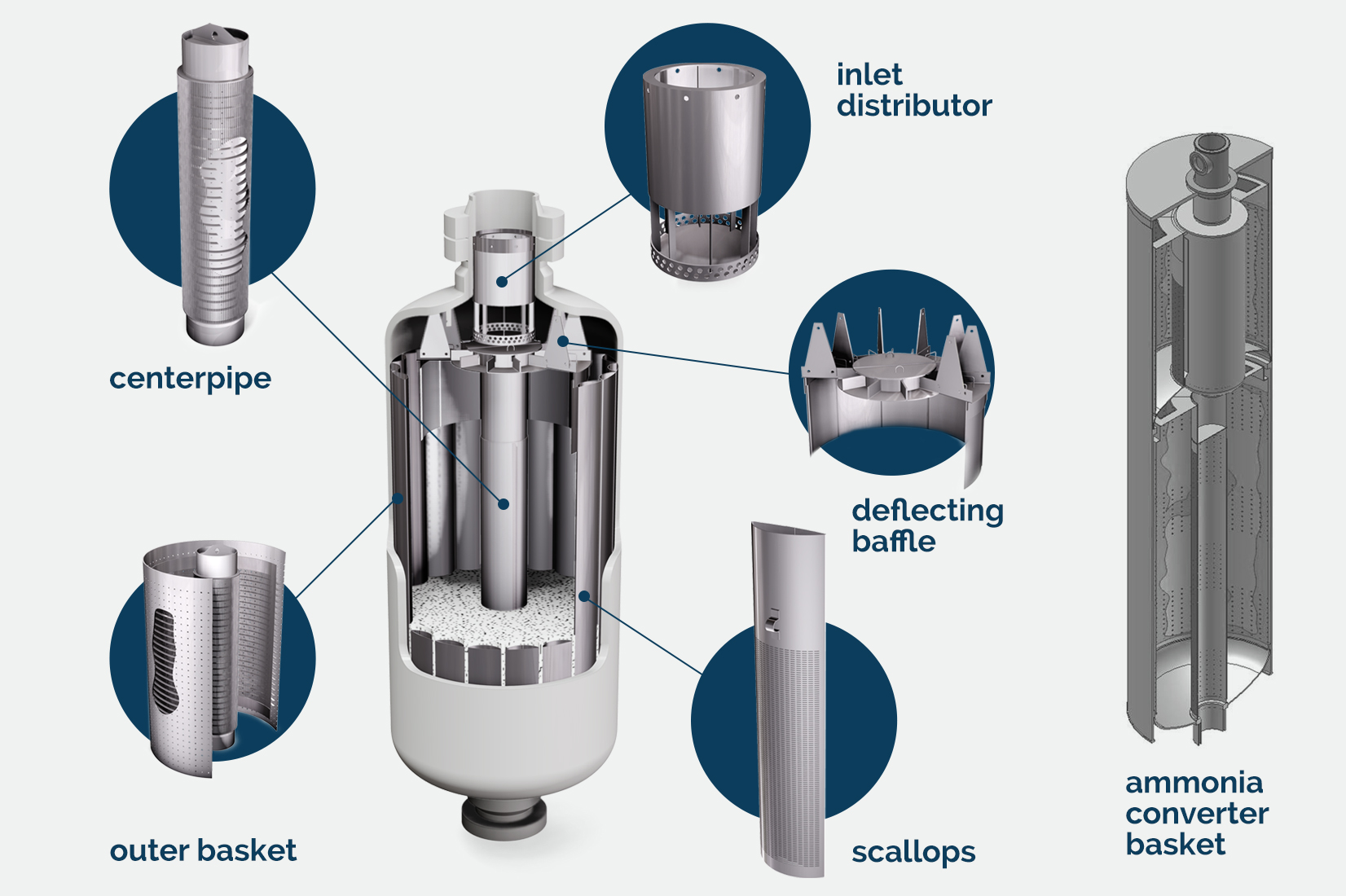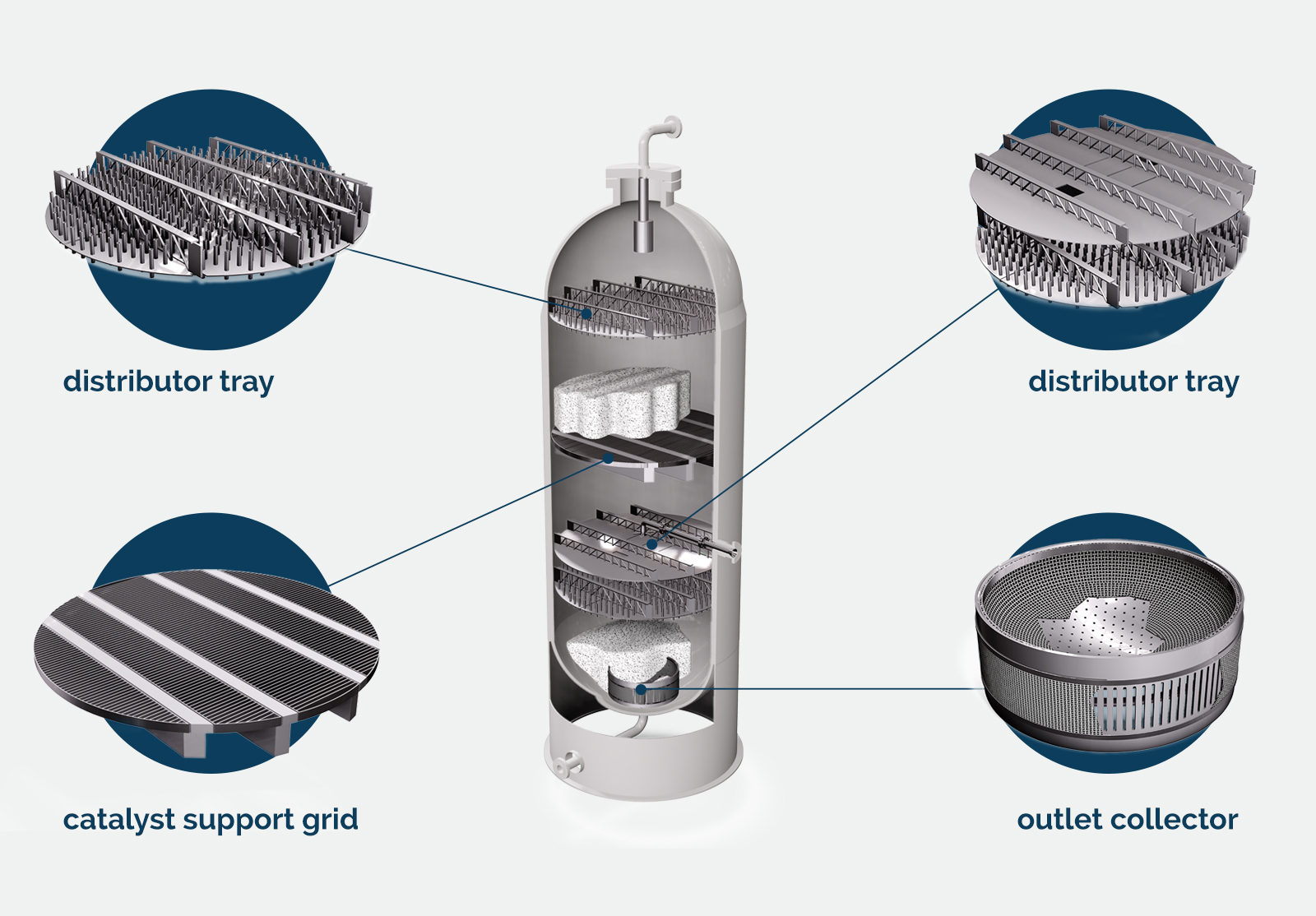Costacurta has long-standing and extensive experience in the production of Reactor Internals and has worked for many years with process and engineering companies, offering them its experience and know-how of production processes and mechanical design to develop new products. This collaboration entails feasibility studies, the development of prototypes and technical consultancy aimed at enhancing the quality and reducing the costs of the product. Alongside the advancement of its technical know-how, Costacurta has paid great attention to the evolution of its organisational structure to meet needs deriving from the management of complex projects, such as those that involve the design and supply of all the reactor internal elements.
Reactors used in the chemical, petrochemical and refining industries have different flow directions. This flow may be radial (Radial Flow) or vertical downwards (Down Flow). Costacurta has gained extensive experience in the construction of Radial Flow and Down Flow reactor internals.
Do you have a specific request?
Contact us now
RADIAL FLOW REACTOR INTERNALS
Radial flow reactors are characterised by an outside to inside or inside to outside “radial” flow. In a typical Radial Flow reactor, the reagent gas is flowing radially on the catalyst bed through components, typically outer baskets or scallops positioned close to the reactor wall and consisting of perforated plates, meshes or wedge wire screens. After passing through the catalyst bed, the gas is collected in a component, typically a centre pipe or inner basket, also made of perforated plate, mesh or wedge wire screen. There are also applications where the gas follows a radial route in the opposite direction, from inside to outside. However, the basic configuration of the internals is the same. Radial Flow reactors also have other internal components including, for example, inlet distributors and deflecting baffles.
DOWN FLOW REACTOR INTERNALS
Down Flow reactors are characterised by a down flow, from the top to the bottom of the reactor, that gives rise to chemical reactions between the reagent fluids coming into contact with the catalyst. In a typical two-bed Down Flow reactor configuration, the reagent fluid is distributed, by means of an inlet diffuser, over the underlying distributor tray. This tray has the function of evenly distributing the liquid over the underlying catalyst bed, supported by the catalyst support grid. Further, down the reactor there is the quench zone where the reagent fluid is cooled by means of gas injection and is then conveyed into a mixing chamber. From here, the liquid is distributed over the subsequent catalyst bed thanks to a distributor tray. The outlet collector positioned on the bottom of the reactor supports the lower catalyst bed and enables the reacted fluid to be conveyed outside the reactor. Costacurta produces all these internals.

Distinctive elements of Costacurta’s Down Flow reactor internals
More than 60 years’ experience in the production of Reactor Internals
Qualified personnel with long-standing experience
Technical departments dedicated to the mechanical design of components and to the optimisation of the production processes
Tried and tested design, production and quality control operating procedures
Project management experience also in projects for the supply of internal components for several reactors simultaneously and characterised by management complexity, due to the need to fulfil the requirements of all the subjects involved in the project
Internal production of all the filtering elements used in the construction of Reactor Internals
Applications

Chemical



